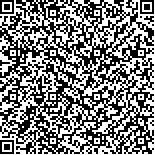| 摘要: |
| 在17.2—20.8℃条件下,对长蛸[初始鲜重(127.27±12.19)g,初始胴背长(67.23±6.12)mm]进行不同时间(0,3,6,9,12,15d)饥饿处理后再恢复投喂(15d)的实验,研究不同饥饿时间和再投喂对长蛸生长及肌肉脂肪酸含量的影响。结果表明,随饥饿时间的延长,长蛸的成活率、肝体比呈下降趋势,其中饥饿12d后成活率显著降低,饥饿0—3d期间肝体比下降最为显著。恢复投喂后,饥饿时间较长组(9,12,15d)长蛸的肝体比仍显著低于对照组。长蛸的体质量降低率呈现上升趋势,饥饿15d时达到最高值18.15%±4.46%。特定生长率值中,饥饿3d组显著高于对照组,饥饿6d、9d组与对照组差异不显著,饥饿12d、15d组均显著低于对照组。再投喂结束后3d、6d、9d组的鲜重与对照组差异不显著,12d、15d组显著低于对照组。长蛸肌肉脂肪酸中单不饱和脂肪酸(MUFA)的含量,自饥饿6d起随饥饿时间延长表现出显著上升趋势;再投喂后,饥饿12d、15d组饱和脂肪酸(SFA)、多不饱和脂肪酸(PUFA)的值显著高于对照组。综上说明,饥饿3d、6d、9d组长蛸具有完全补偿生长的能力,饥饿12d、15d组个体仅具有部分补偿生长的能力,主要通过增加摄食量来完成其补偿生长。因此,为保证长蛸人工养殖效果,应避免个体饥饿超过9d。 |
| 关键词: 长蛸 饥饿 再投喂 生长 脂肪酸 |
| DOI:10.11693/hyhz20180200045 |
| 分类号:S966 |
| 基金项目:山东省重点研发计划项目,2016GSF115014号;2016年山东省重大农业应用创新项目(北方经济蛸类规模繁育和高效养殖技术集成与示范)。 |
|
| EFFECTS OF STARVATION DURATION AND RE-FEEDING ON THE GROWTH AND MUSCLE FATTY ACID CONTENT OF OCTOPUS MINOR |
|
SONG Min-Peng, WANG Jin-Hai, ZHENG Xiao-Dong
|
|
The Key Laboratory of Mariculture, Ministry of Education, Ocean University of China, Qingdao 266003, China
|
| Abstract: |
| Under the temperature of seawater of 17.2-20.8℃, Octopus minor[initial wet weight (127.27±12.19)g, initial mantle length (67.23 ±6.12) mm] were starved at different durations (0, 3, 6, 9, 12, and 15d). After the starvation treatment, O. minor was re-fed for 15 days to study the effects of starvation duration and re-feeding on the growth and the muscle fatty acid content. The results show that the survival rate and hepatosomatic index of O. minor decreased with the increase of the starvation time, in which the survival rate was significantly different from that of the control group after starvation 12d, the ratio of hepatosomatic index decreased the most obviously in the 0-3d group. After re-feeding, the hepatosomatic index of O. minor with a long starvation period (9, 12, and 15d) was still significantly lower than that of the control group. The decrease rate of body weight showed an upward trend, reaching the highest value of 18.15%±4.46% on the 15d. The specific growth rate of the 3d group was significantly higher than that in control group, those of the 12d and 15d groups were significantly lower than the control group. The wet weights in 3d, 6d, and 9d groups after re-feeding were not significantly different from those in the control, but those of the 12d and 15d groups were significantly lower than the control. The content of PUFA in the fatty acid of O. minor significantly increased with the length of starvation from 6d. After re-feeding, the values of UFA and PUFA in 12d and 15d groups were higher than that of the control. In conclusion, O. minor in starvation for 3d, 6d, 9d could fully compensate for growth, and for 12d, 15d could pick up partially only. The starved O. minor could complete the compensatory growth by increasing their food intake. Therefore, in practice, the starvation duration shall be within 9 days. |
| Key words: Octopus minor starvation re-feeding growth fatty acid |
